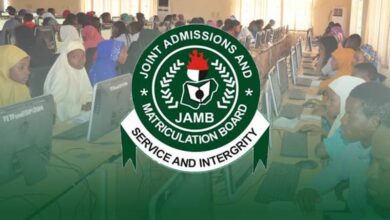- What does an effective introduction establish?
- A. Disinterest in the topic
- B. The tone and direction of the discussion ✅
- C. A series of unrelated ideas
- D. The conclusion of the work
- What is a common mistake in note-taking during lectures?
- A. Summarizing key points
- B. Overemphasizing trivial details at the expense of main ideas ✅
- C. Organizing notes clearly
- D. Writing down questions to ask later
- How does understanding different communication styles benefit interactions?
- A. It complicates conversations
- B. It fosters mutual understanding and respect ✅
- C. It impairs effective dialogue
- D. It creates barriers between speakers
- What should you do when confused by a speaker’s message?
- A. Ignore the confusion
- B. Ask clarifying questions respectfully ✅
- C. Distract others with your concerns
- D. Assume a misunderstanding on their part
- Which is true about academic conversations?
- A. They discourage questions and clarifications
- B. They encourage collaborative engagement and inquiry ✅
- C. They focus solely on lecturing
- D. They are casual and informal
- What should a speaker expect from an active listener?
- A. Disinterest and boredom
- B. Eye contact, nodding, and engagement ✅
- C. Constant interruptions
- D. Ignoring the speaker’s points
- What is an example of physiological noise?
- A. Loud noises from construction outside
- B. Personal biases affecting listening
- C. A headache distracting from concentration ✅
- D. Misunderstanding due to jargon
- What is a critical component of effective reading according to the text?
- A. Skimming through texts to save time
- B. Taking notes selectively while reading ✅
- C. Ignoring difficult vocabulary
- D. Reading in a noisy environment
- How should one approach studying academic texts effectively?
- A. By skimming without comprehension
- B. By reading distractions
- C. With a purposeful and strategic mindset ✅
- D. By avoiding taking notes
- How does one relate new ideas to old ones during reading?
- A. By only focusing on the old ideas
- B. By disregarding all prior knowledge
- C. By connecting new information to what is already understood ✅
- D. By memorizing the new ideas without analysis
- What is an example of a common auditory processing issue during conversations?
- A. Strong visual distractions
- B. Inability to decipher speaker’s tone and meaning ✅
- C. Ignoring background noise
- D. Understanding only good speakers
- What could serve as barriers to effective listening during academic lectures?
- A. Concenctedly taking notes
- B. Attending to personal biases ✅
- C. Actively engaging with the material
- D. Building rapport with the speaker
- Which reading strategy helps enhance understanding?
- A. Skipping difficult sections
- B. Ignoring context
- C. Active questioning while reading ✅
- D. Only noting down references
- How can one demonstrate critical thinking during discussions?
- A. By accepting all presented views without question
- B. By actively assessing and analyzing information ✅
- C. By prioritizing personal beliefs over facts
- D. By remaining silent during disagreement
- How can one measure reading effectiveness?
- A. By the volume of material read only
- B. By comprehension and retention of key points ✅
- C. Through speed alone
- D. Ignoring personal interests
- What is the role of cultural awareness in effective communication?
- A. To limit diverse perspectives
- B. To promote uniformity in language use
- C. To enhance understanding and connection ✅
- D. To discourage engagement with new ideas
- What role does feedback play in listening?
- A. It is unnecessary and is best avoided
- B. It confirms understanding and engagement ✅
- C. It encourages interruptions during speech
- D. It complicates conversations
- What is a useful strategy for improving critical listening skills?
- A. Always agreeing with the speaker
- B. Focusing only on your own opinions
- C. Isolating facts from opinions ✅
- D. Ignoring unfamiliar terms
- What does the term ‘phoneme’ refer to in linguistics?
- A. The smallest unit of meaning in language
- B. The largest speech sound in a language
- C. The smallest distinct unit of sound in a language ✅
- D. Any written letter in a word
- What does effective listening require based on the text?
- A. Internal distractions to enhance focus
- B. An objective stance to maintain clarity ✅
- C. Multitasking during conversations
- D. Judgments about the speaker’s message
- Why is it vital to relate new information to existing knowledge?
- A. It complicates comprehension
- B. It enhances retention and understanding ✅
- C. It is irrelevant to the learning process
- D. It distracts from the main ideas
- What is the contribution of the ‘formal’ register in language?
- A. It encourages casual language use
- B. It provides a platform for serious discourse ✅
- C. It limits accessibility to information
- D. It confuses audience understanding
- What element is essential in the construction of effective paragraphs?
- A. A mixture of unrelated topics
- B. A clear and uniform focus on one main idea ✅
- C. Ambiguous language and sentences
- D. Random placement of sentences
- What is the role of prior knowledge in the reading process?
- A. It confuses understanding
- B. It enhances comprehension and engagement ✅
- C. It limits the information that can be processed
- D. It has no significant impact
- Which of the following refers to the internal thoughts distracting a listener from a speaker’s message?
- A. Physical noise
- B. Psychological noise ✅
- C. Physiological noise
- D. Semantic noise
- What is ‘cognitive engagement’ in reading?
- A. The process of skimming for fast comprehension
- B. Active involvement in understanding content ✅
- C. Sole reliance on visuals
- D. Ignoring prior knowledge
- What distinguishes a regional dialect from a national dialect?
- A. Regional dialects are only spoken in cities.
- B. Regional dialects are associated with specific geographical areas, while national dialects are broader. ✅
- C. National dialects do not have variations.
- D. There are no significant differences between dialects.
- What is meant by ‘academic reading’?
- A. Reading for leisure and entertainment
- B. Reading to gather information for research and assignments ✅
- C. Reading without comprehension
- D. Skimming through texts for fun
- How does one achieve effective summarization of reading material?
- A. Ignoring the main themes
- B. Prioritizing key points and arguments ✅
- C. Avoiding detailed understanding
- D. Randomly selecting sections
- What should you focus on while giving feedback to a lecturer?
- A. To ensure you dominate the conversation
- B. To disrupt their flow
- C. To convey understanding and engagement ✅
- D. To ensure speaker’s errors are emphasized



Educative